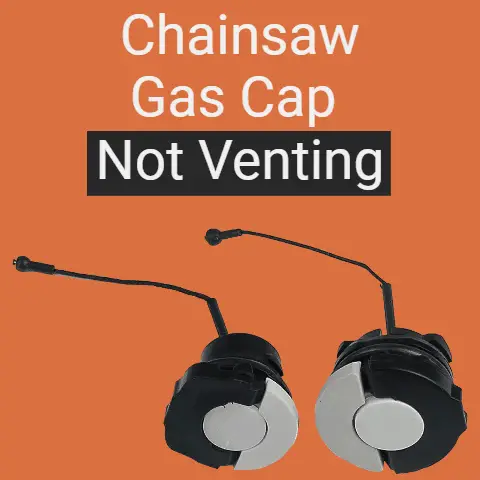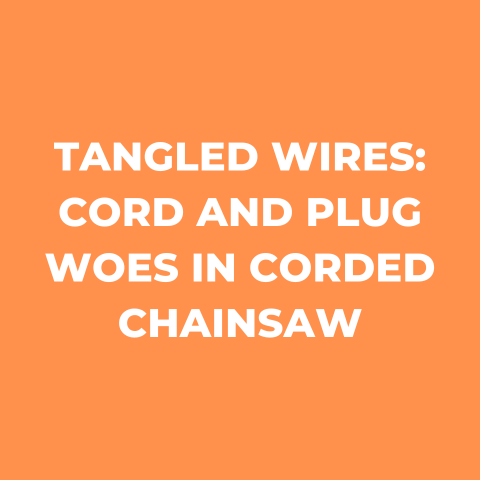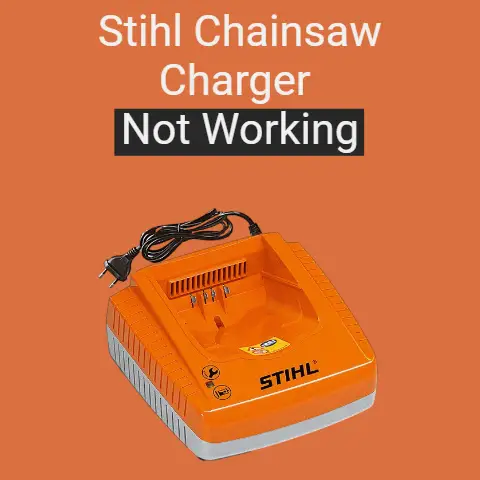Stihl Chainsaw Break In (Explained)
Did you buy a new Stihl chainsaw, remember you cannot go and start using it like any old chainsaw.
A new chainsaw has some protocols to follow.
If you need the best service life, you should break in the new chainsaw before it is to work on heavy use.
There is the manufacturer instruction in the manual saying that the Stihl chainsaw break-in is important.
New chainsaws are to be broken by light-to-medium duty use such that the throttle opens clearly and there are engine revolutions below the maximum.
The break-in period ensures the piston rings proper seating and reduces the engine likelihood with the saw service life.
Here you can know how to observe the break-in, why it is necessary, and for how long.
Chainsaw Break-in principles
Use more oil
The first step is to use more oil for the first few tanks in the fuel mix as a conventional break-in integral part.
The standard ratio with modern oils of gas-to-oil is 50:1, while the break-in tanks may use 33:1 or 25:1.
More oil requires to ascertain the new engine receives proper lubrication during break-in.
The engine at the factory should receive pre-lubrication, while the manufacturers do not instruct specifically to run the tanks thicker at the first step.
However, doing so during the break-in process adds insurance to the tool.
Warm-up
A chainsaw break-in is a good protocol allowing the saw to stay idle for a few minutes and then it is set to work.
The idling time helps the engine to warm up and the moving parts are wet with oil before the engine gets loaded heavily.
Light to medium duty
Place a chainsaw for light-to-medium duty and variable work using throttle range and the middle and low parts of the engine revolution.
You may go with pruning, cutting down small trees, and light firewood cutting tasks.
You may avoid running the engine at a high power level and high revolutions for a long time.
You may also avoid felling, chainsaw milling, and bucking large trees as they are heavy-duty tasks.
Idling does not break in
Putting the chainsaw to work on heavy-duty right away is not right.
You may consider the break-in, more easily and allow the chainsaw to stay idle for the next few hours.
However, idling is not enough to break the chainsaw.
The engine components require piston forces and cylinder pressure as substantial loading to ensure proper seating.
What is the purpose of the break-in of a chainsaw?
The key purpose of the break-in of a chainsaw is to improve the engine’s piston rings seating on the cylinder wall.
Here the rings or the wall are flawless and the break-in allows wearing parts against each other to mate better.
The operation of break-in helps to bed all the moving parts against each other.
It would include typically the wrist pin and crank pin, besides the crankshaft bearings.
Thus, breaking a chainsaw engine reduces the problems of the engine largely and the service life expected increases for the chainsaw.
Break-in is an absolute necessity as a part of a good operation.
It is not a compulsion with the modern saws.
There is nothing as adverse effects caused by omitting the break-in period in the new saws.
Yet, break-in is the recommendation as it allows to know the manufacturing errors and small errors to come to notice and to avoid serious issues.
The break-in works like insurance.
Many people skip the break-in of chainsaw completely and put the saw right away to the hardest possible use.
They also get normal service life from the saw.
It is the reason that the new claims do not support the break-in as necessary for the new chainsaws.
There is no doubt that the accuracy of the machining has improved and that the break-in period has become less critical than ever.
You can follow the procedure of break-in in a chainsaw to get the extra insurance and stay safe from engine trouble.
How long is the break-in period?
The consensus, in general, is that the break-in period of a chainsaw should last for a few first tanks of gas.
How many tanks vary with each manufacturer available, but here are the guidelines for Husqvarna and Stihl below.
Chainsaw brand Break-in period
Husqvarna 10 h / 6…10 tanks
Stihl 3 tanks
Does a Stihl chainsaw need a break-in?
A new Stihl chainsaw undergoing a break-in is the best before it begins with other cutting projects.
It is because immediately starting to cut and using the chainsaw for dense or heavy wood may ruin the chain.
How to Break in a New Stihl Chainsaw
If you have bought a new Stihl chainsaw, you can break in before you begin to use it for cutting projects.
In this way, you can avoid ruining the chainsaw chain.
The Stihl chains are pre-stretched and running even a new chainsaw over a break-in short period assures smooth functioning.
The small imperfections are cleared and the chainsaw chain settles into the rivets with ease, making the tree cutting and felling easier.
- Increase the oil flow if the new Stihl chainsaw has an adjustable automatic oiler.
If the model has an oiler, find on the underside of the saw a small screw.
It will appear below an icon showing a droplet picture above the cutting tooth.
You may clockwise turn the screw and increase the flow of oil. - Start the engine of the Stihl chainsaw, and let it run at a low speed without doing anything for nearly three minutes.
- Turn the engine off the chainsaw and wait for the chain to come to a complete stop.
- Loosen the mounting nuts of the cutting bar on the side.
It is easier to use the tool.
Loosen the nuts pointing to the nose of the bar and move it up and down.
Pull the nose of the bar and tighten the chain after adjusting the chainsaw side screw, and using your hand pull freely the chain.
Wrapping up
Your Stihl chainsaw is the best and reaches maximum power after refueling the tank.
Note to wear proper attire as you operate a chainsaw, even during the break-in time.
It is to wear close-toe shoes, long pants, a long-sleeved shirt, heavy work gloves, and safety glasses.






